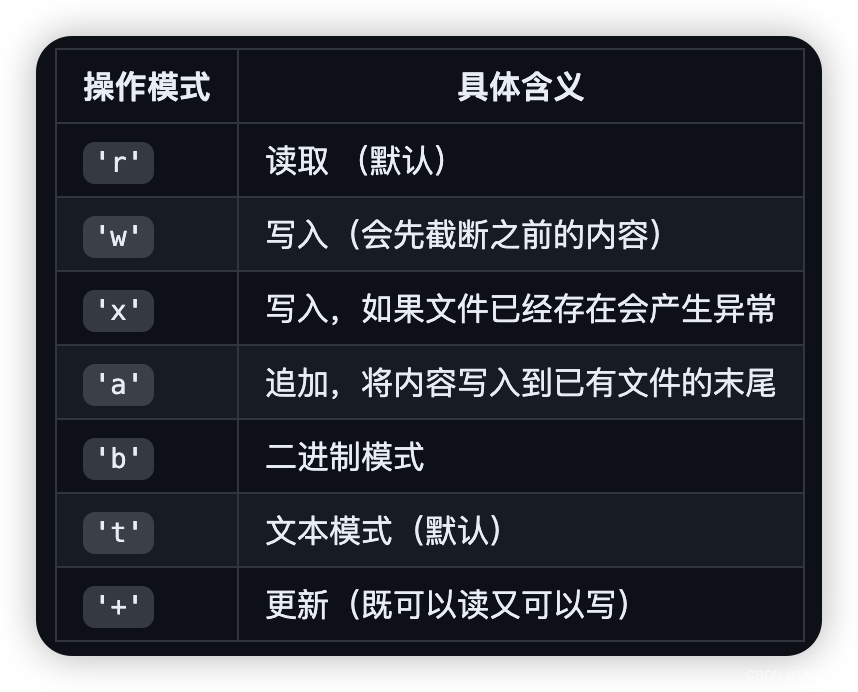
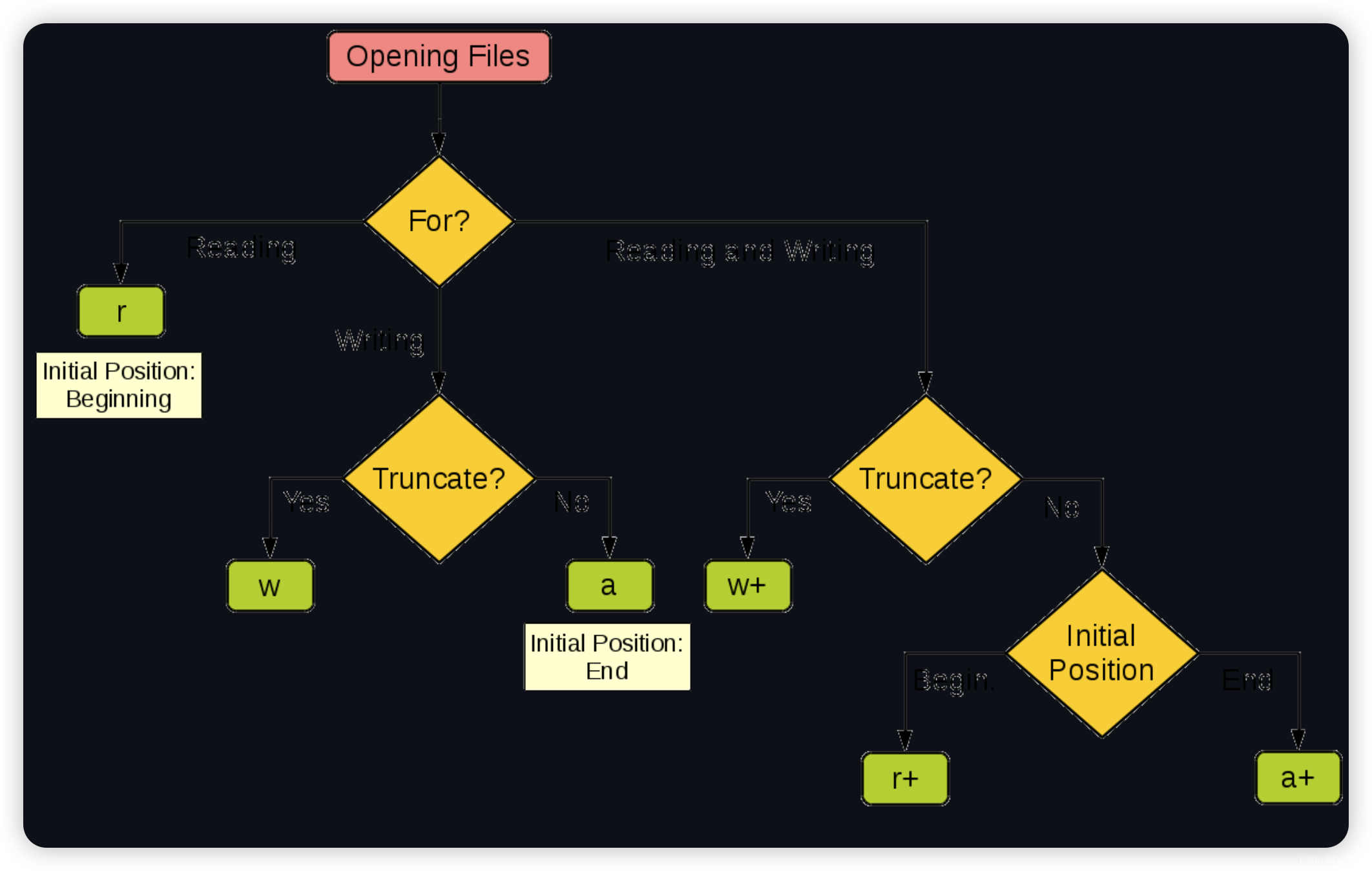
1.读取csv文件
读取文本文件时,需要在使用open函数时指定好带路径的文件名(可以使用相对路径或绝对路径)并将文件模式设置为'r'(如果不指定,默认值也是'r'),然后通过encoding参数指定编码(如果不指定,默认值是None,那么在读取文件时使用的是操作系统默认的编码),如果不能保证保存文件时使用的编码方式与encoding参数指定的编码方式是一致的,那么就可能因无法解码字符而导致读取失败。下面的例子演示了如何读取一个纯文本文件。

"""
读取CSV文件
Version: 0.1
Author: Maxwell
Date: 2024-05-07
"""
import csv
filename = 'example.csv'
try:
with open(filename) as f:
reader = csv.reader(f)
data = list(reader)
except FileNotFoundError:
print('无法打开文件:', filename)
else:
for item in data:
print('%-30s%-20s%-10s' % (item[0], item[1], item[2]))
2.写入CSV文件
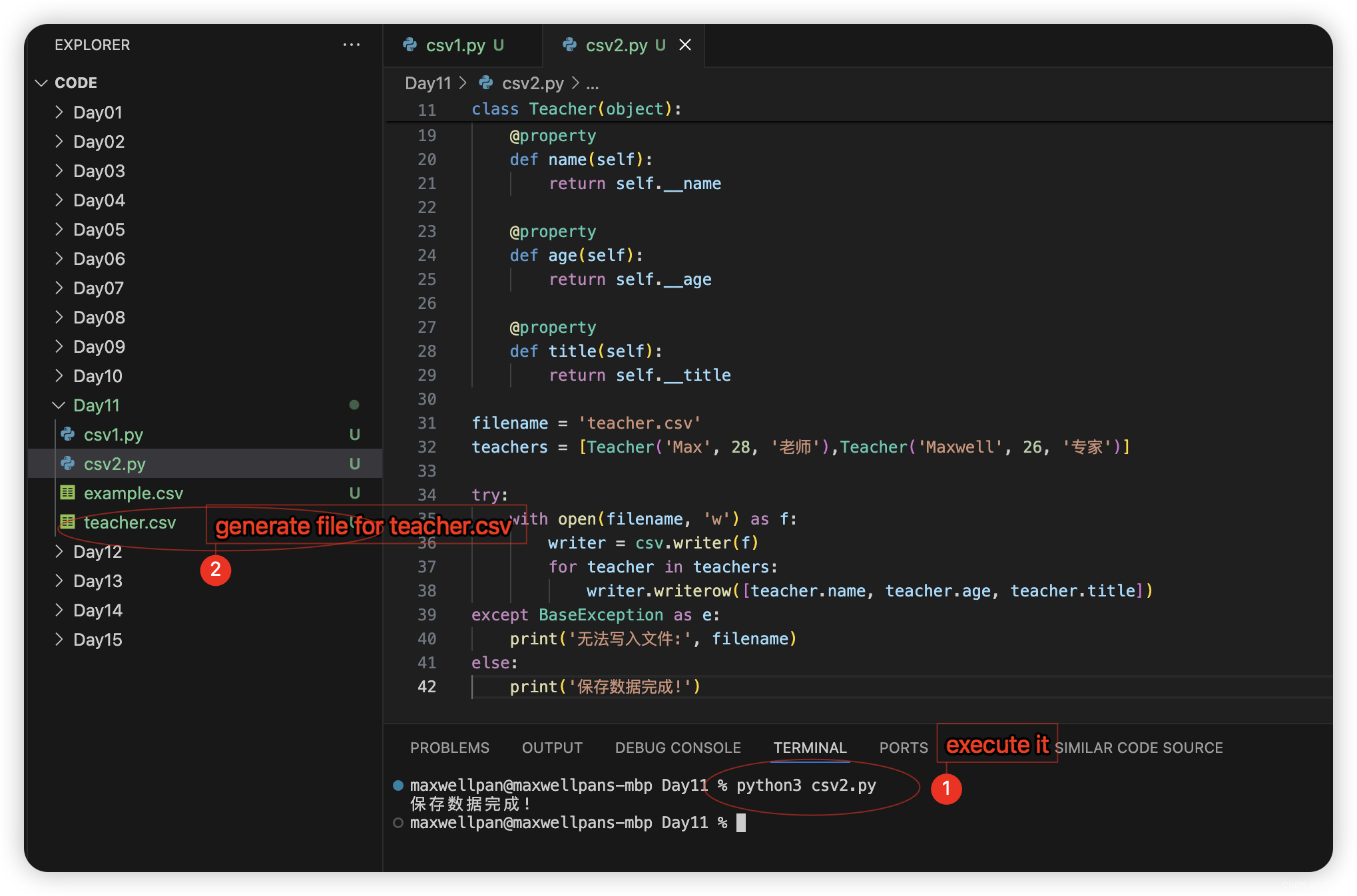
"""
写入CSV文件
Version: 0.1
Author: Maxwell
Date: 2024-05-07
"""
import csv
class Teacher(object):
def __init__(self, name, age, title):
self.__name = name
self.__age = age
self.__title = title
self.__index = -1
@property
def name(self):
return self.__name
@property
def age(self):
return self.__age
@property
def title(self):
return self.__title
filename = 'teacher.csv'
teachers = [Teacher('Max', 28, '老师'),Teacher('Maxwell', 26, '专家')]
try:
with open(filename, 'w') as f:
writer = csv.writer(f)
for teacher in teachers:
writer.writerow([teacher.name, teacher.age, teacher.title])
except BaseException as e:
print('无法写入文件:', filename)
else:
print('保存数据完成!')3.异常机制——处理程序在运行时间可能发生的状态

"""
异常机制 - 处理程序在运行时可能发生的状态
Version: 0.1
Author: Maxwell
Date: 2024-05-07
"""
input_again = True
while input_again:
try:
a = int(input('a = '))
b = int(input('b = '))
print('%d / %d = %f' % (a, b, a / b))
input_again = False
except ValueError:
print('请输入整数')
except ZeroDivisionError:
print('除数不能为0')
# 处理异常让代码不因异常而崩溃是一方面
# 更重要的是可以通过对异常的处理让代码从异常中恢复过来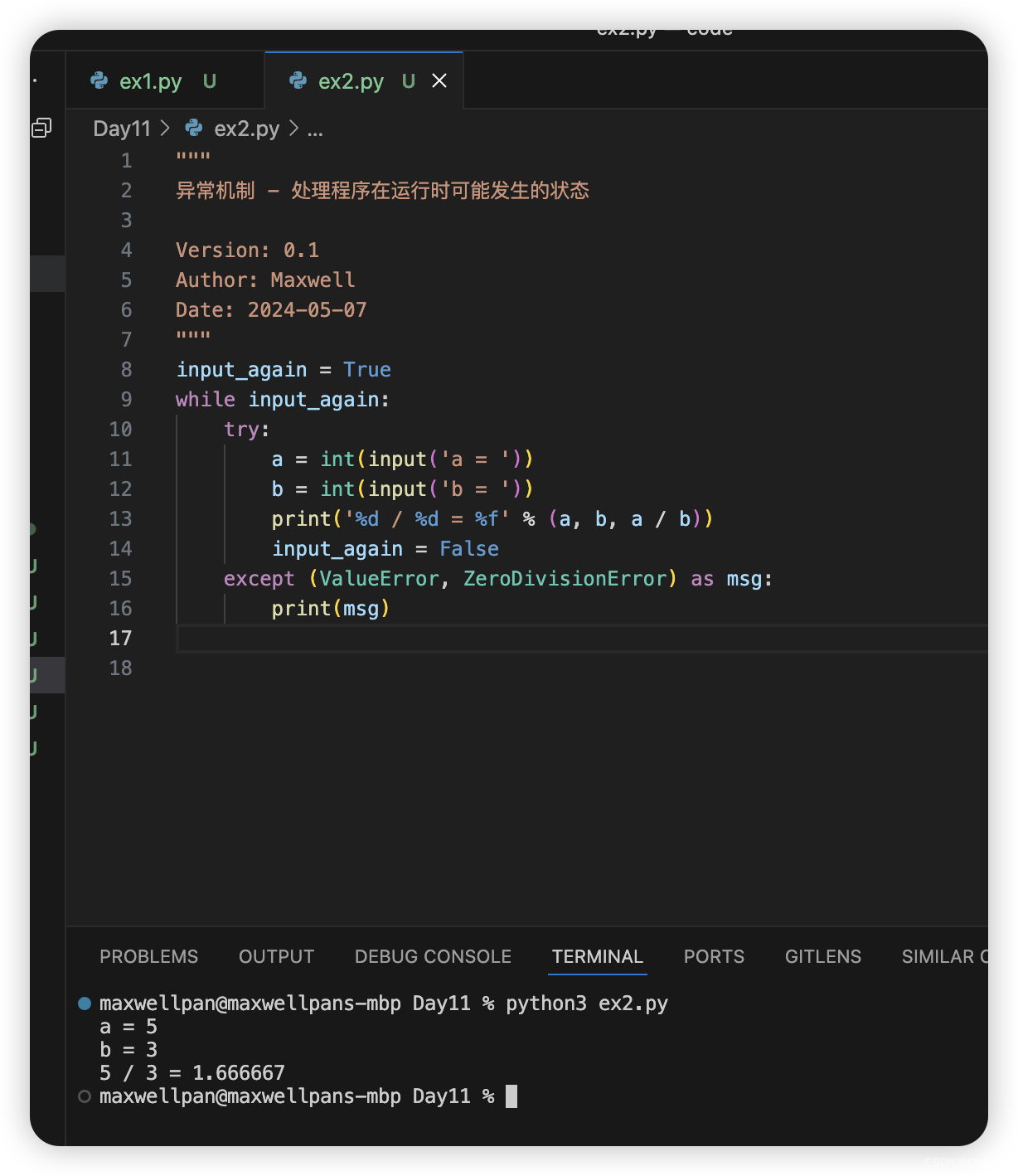
"""
异常机制 - 处理程序在运行时可能发生的状态
Version: 0.1
Author: Maxwell
Date: 2024-05-07
"""
input_again = True
while input_again:
try:
a = int(input('a = '))
b = int(input('b = '))
print('%d / %d = %f' % (a, b, a / b))
input_again = False
except (ValueError, ZeroDivisionError) as msg:
print(msg)

"""
异常机制 - 处理程序在运行时可能发生的状态 3
Version: 0.1
Author: Maxwell
Date: 2024-05-07
"""
import time
import sys
filename = input('请输入文件名: ')
try:
with open(filename) as f:
lines = f.readlines()
except FileNotFoundError as msg:
print('无法打开文件:', filename)
print(msg)
except UnicodeDecodeError as msg:
print('非文本文件无法解析')
sys.exit()
else:
for line in lines:
print(line.rstrip())
time.sleep(0.5)
finally:
# 此处最适合做善后事宜
print('不管发生什么我都会执行') 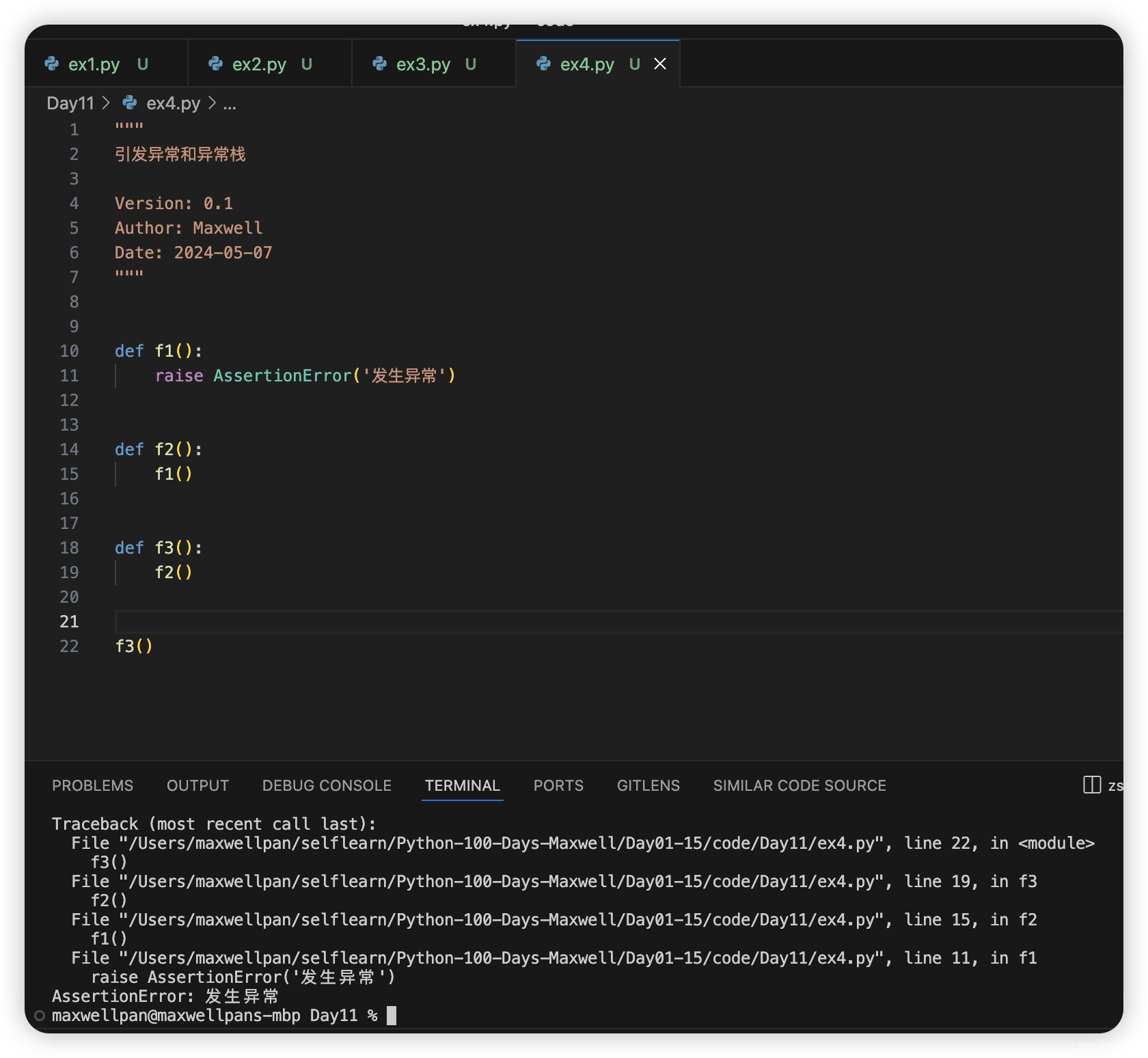
4. 从文本文件中读取数据

"""
从文本文件中读取数据
Version: 0.1
Author: Maxwell
Date: 2024-05-07
"""
import time
def main():
# 一次性读取整个文件内容
with open('tree.txt','r', encoding='utf-8') as f:
print(f.read())
# 通过for-in 循环逐行读取
with open('tree.txt', mode='r') as f:
for line in f:
print(line, end='')
time.sleep(0.5)
print()
# 读取文件按行读取到列表中
with open('tree.txt') as f:
lines = f.readlines()
print(lines)
if __name__ == '__main__':
main()

"""
读取圆周率文件判断其中是否包含自己的生日
Version: 0.1
Author: Maxwell
Date: 2024-05-07
"""
birth = input('请输入你的生日: ')
with open('pi_million_digits.txt') as f:
lines = f.readlines()
pi_string = ''
for line in lines:
pi_string += line.strip()
if birth in pi_string:
print('Bingo!!!') 
"""
写文本文件
将100以内的素数写入到文件中
Version: 0.1
Author: Maxwell
Date: 2024-05-07
"""
from math import sqrt
def is_prime(n):
for factor in range(2, int(sqrt(n)) + 1):
if n % factor == 0:
return False
return True
# 试一试有什么不一样
# with open('prime.txt', 'a') as f:
with open('prime.txt', 'w') as f:
for num in range(2, 100):
if is_prime(num):
f.write(str(num) + '\n')
print('写入完成!')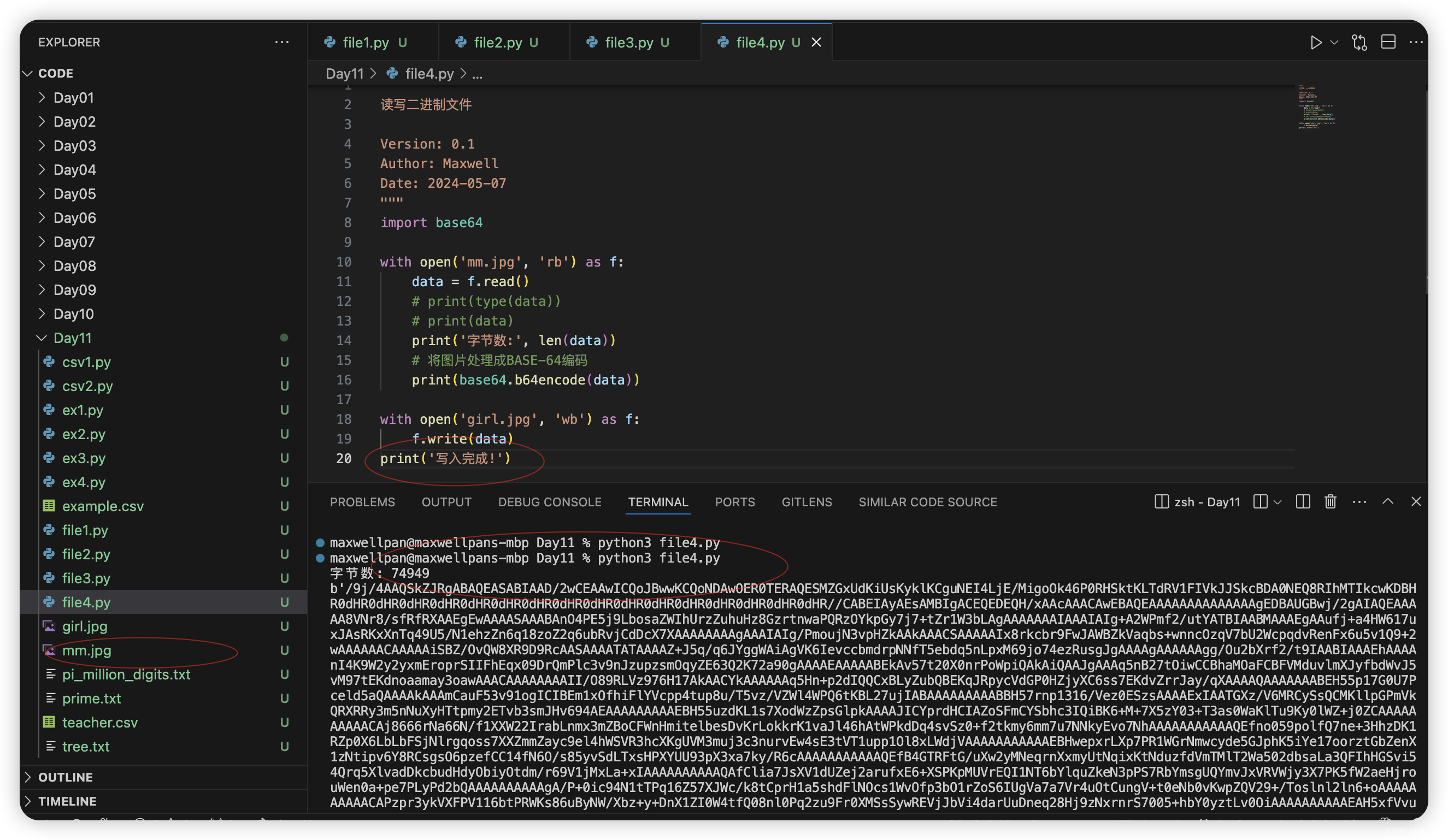
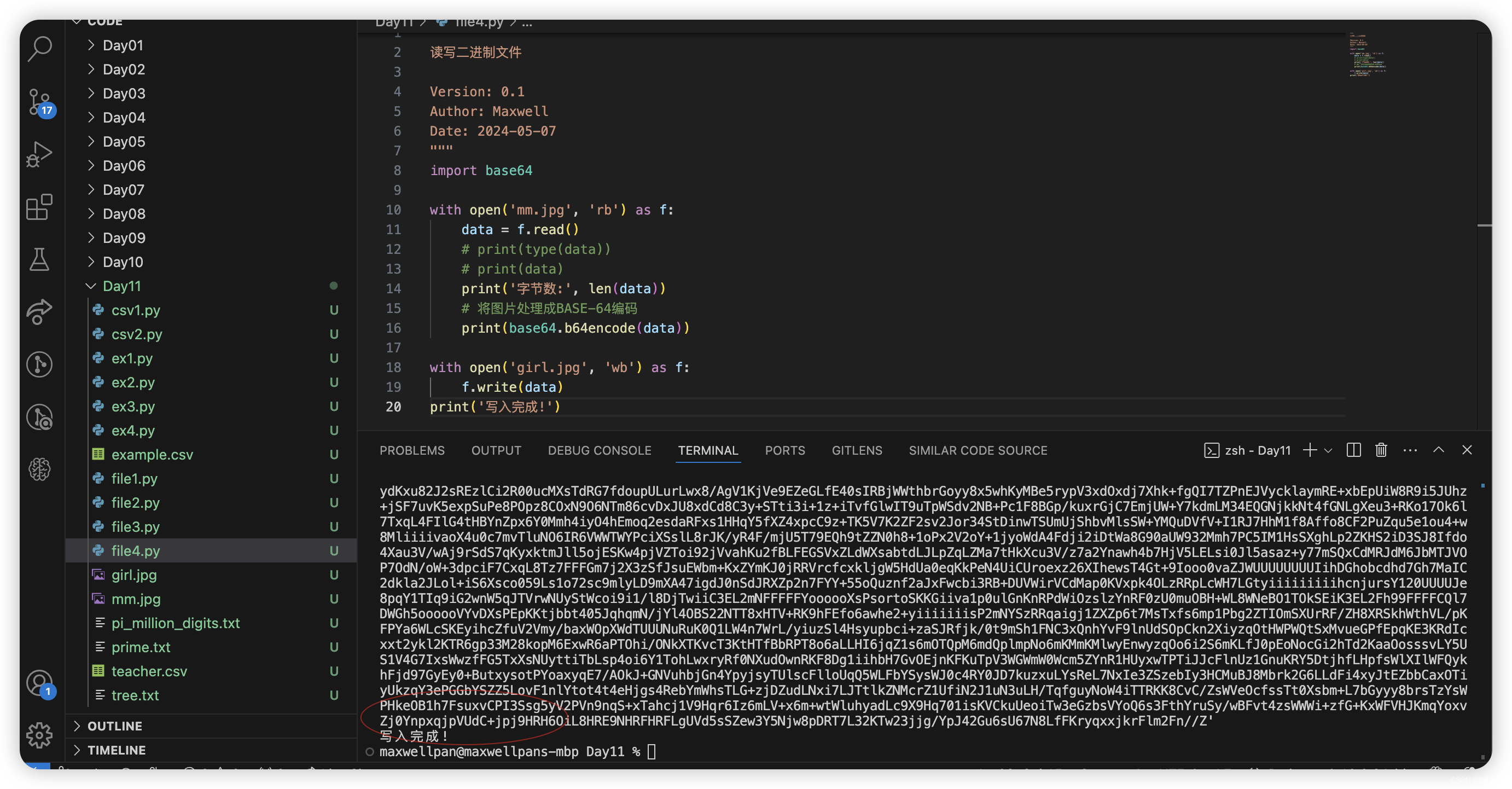
"""
读写二进制文件
Version: 0.1
Author: Maxwell
Date: 2024-05-07
"""
import base64
with open('mm.jpg', 'rb') as f:
data = f.read()
# print(type(data))
# print(data)
print('字节数:', len(data))
# 将图片处理成BASE-64编码
print(base64.b64encode(data))
with open('girl.jpg', 'wb') as f:
f.write(data)
print('写入完成!')5.读取JSON数据
通过上面的讲解,我们已经知道如何将文本数据和二进制数据保存到文件中,那么这里还有一个问题,如果希望把一个列表或者一个字典中的数据保存到文件中又该怎么做呢?答案是将数据以JSON格式进行保存。JSON是“JavaScript Object Notation”的缩写,它本来是JavaScript语言中创建对象的一种字面量语法,现在已经被广泛的应用于跨平台跨语言的数据交换,原因很简单,因为JSON也是纯文本,任何系统任何编程语言处理纯文本都是没有问题的。目前JSON基本上已经取代了XML作为异构系统间交换数据的事实标准。
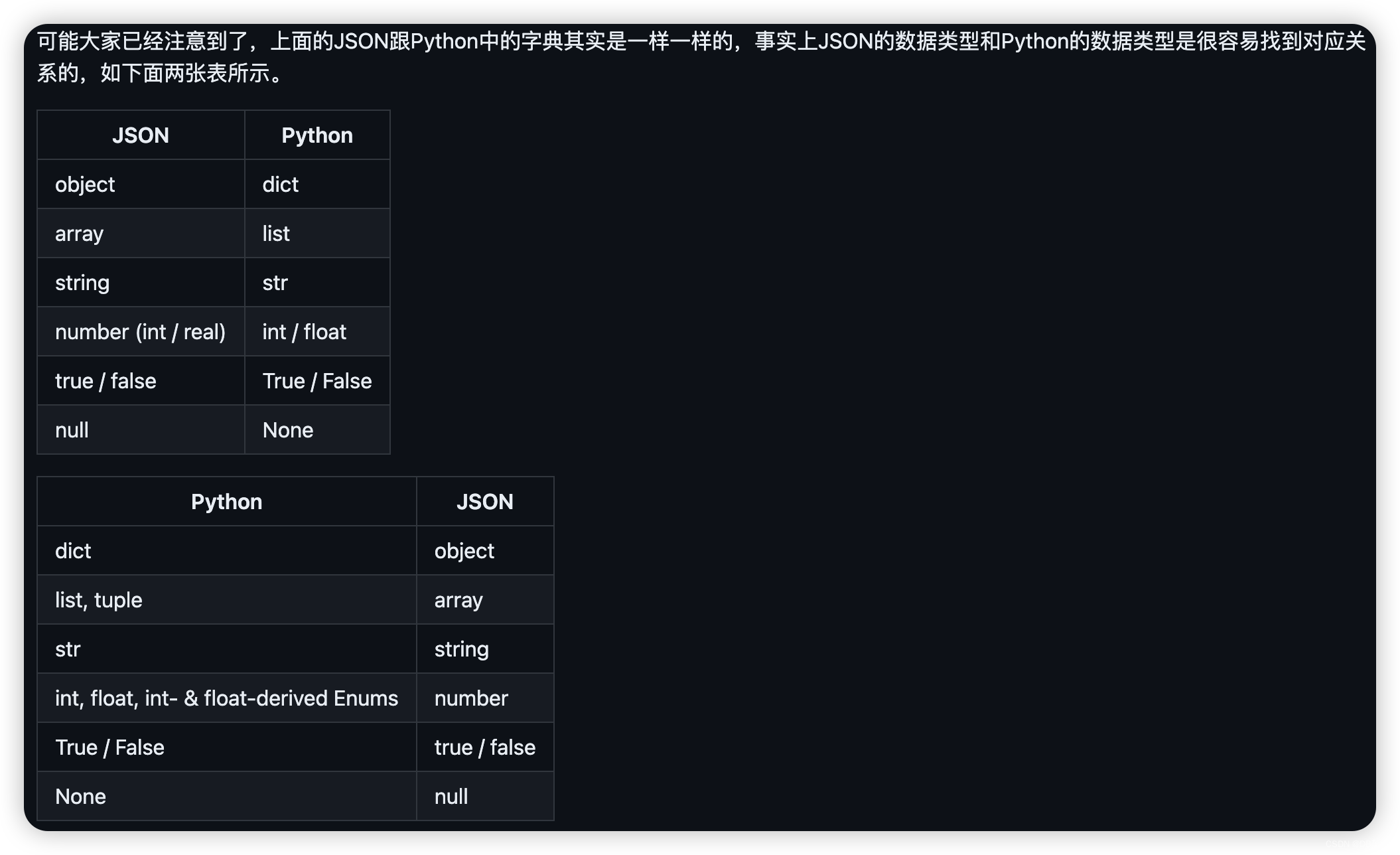
json模块主要有四个比较重要的函数,分别是:
dump- 将Python对象按照JSON格式序列化到文件中dumps- 将Python对象处理成JSON格式的字符串load- 将文件中的JSON数据反序列化成对象loads- 将字符串的内容反序列化成Python对象
这里出现了两个概念,一个叫序列化,一个叫反序列化。自由的百科全书维基百科上对这两个概念是这样解释的:“序列化(serialization)在计算机科学的数据处理中,是指将数据结构或对象状态转换为可以存储或传输的形式,这样在需要的时候能够恢复到原先的状态,而且通过序列化的数据重新获取字节时,可以利用这些字节来产生原始对象的副本(拷贝)。与这个过程相反的动作,即从一系列字节中提取数据结构的操作,就是反序列化(deserialization)”。
目前绝大多数网络数据服务(或称之为网络API)都是基于HTTP协议提供JSON格式的数据,关于HTTP协议的相关知识,可以看看阮一峰老师的《HTTP协议入门》,如果想了解国内的网络数据服务,可以看看聚合数据和阿凡达数据等网站,国外的可以看看{API}Search网站。下面的例子演示了如何使用requests模块(封装得足够好的第三方网络访问模块)访问网络API获取国内新闻,如何通过json模块解析JSON数据并显示新闻标题,这个例子使用了天行数据提供的国内新闻数据接口,其中的APIKey需要自己到该网站申请。

"""
读取JSON数据
Version: 0.1
Author: Maxwell
Date: 2024-05-07
"""
import json
import csv2
json_str = '{"name": "Max", "age": 26, "title": "老师"}'
result = json.loads(json_str)
print(result)
print(type(result))
print(result['name'])
print(result['age'])
# 把转换得到的字典作为关键字参数传入Teacher的构造器
teacher = csv2.Teacher(**result)
print(teacher)
print(teacher.name)
print(teacher.age)
print(teacher.title)
# 请思考如何将下面JSON格式的天气数据转换成对象并获取我们需要的信息
# 稍后我们会讲解如何通过网络API获取我们需要的JSON格式的数据
"""
{
"wendu": "29",
"ganmao": "各项气象条件适宜,发生感冒机率较低。但请避免长期处于空调房间中,以防感冒。",
"forecast": [
{
"fengxiang": "南风",
"fengli": "3-4级",
"high": "高温 32℃",
"type": "多云",
"low": "低温 17℃",
"date": "16日星期二"
},
{
"fengxiang": "南风",
"fengli": "微风级",
"high": "高温 34℃",
"type": "晴",
"low": "低温 19℃",
"date": "17日星期三"
},
{
"fengxiang": "南风",
"fengli": "微风级",
"high": "高温 35℃",
"type": "晴",
"low": "低温 22℃",
"date": "18日星期四"
},
{
"fengxiang": "南风",
"fengli": "微风级",
"high": "高温 35℃",
"type": "多云",
"low": "低温 22℃",
"date": "19日星期五"
},
{
"fengxiang": "南风",
"fengli": "3-4级",
"high": "高温 34℃",
"type": "晴",
"low": "低温 21℃",
"date": "20日星期六"
}
],
"yesterday": {
"fl": "微风",
"fx": "南风",
"high": "高温 28℃",
"type": "晴",
"low": "低温 15℃",
"date": "15日星期一"
},
"aqi": "72",
"city": "北京"
}
"""
"""
写入JSON文件
Version: 0.1
Author: Maxwell
Date: 2024-05-07
"""
import json
teacher_dict = {'name': 'Maxwell', 'age': 26, 'title': '讲师'}
json_str = json.dumps(teacher_dict)
print(json_str)
print(type(json_str))
fruits_list = ['apple', 'orange', 'strawberry', 'banana', 'pitaya']
json_str = json.dumps(fruits_list)
print(json_str)
print(type(json_str))6.Github
Python-100-Days-Maxwell/Day01-15/code/Day11 at main · psmaxwell/Python-100-Days-Maxwell · GitHub
倘若您觉得我写的好,那么请您动动你的小手粉一下我,你的小小鼓励会带来更大的动力。Thanks.